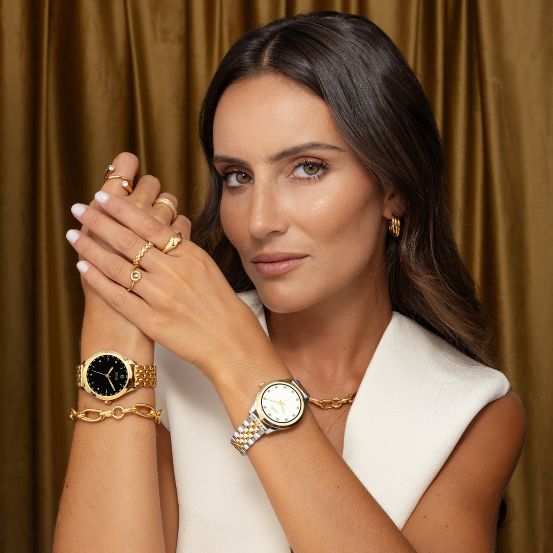Volker Hermes wanted to alert the world to the importance of the details present in some of the best-known paintings of all time. He covered their faces and, through an intervention as radical as it was modern, he brought out their hidden symbols, which could not be seen with the naked eye. These are his Hidden Portraits.
Volker Hermes wanted to alert the world to the importance of the details present in some of the best-known paintings of all time. He covered their faces and, through an intervention as radical as it was modern, he brought out their hidden symbols, which could not be seen with the naked eye. These are his Hidden Portraits.
“In my youth, and before art ‘called’ me, I wanted to be an archeologist. Unsurprisingly, my interest in historical contexts continues to this day.” Volker Hermes answers Vogue Portugal's questions on a weekend, in a relaxed manner. He doesn't impose any resistance to the short deadline we give him for sending the images of his wonderful Hidden Portraits, nor does he even shy away from sharing with us portraits we haven't seen yet. He is a generous artist who recognizes the value, and humor, of his work. On his website, he warns in advance that his ideals are those of a good man, without star mania: “You don't have to know everything, but you can feel a lot.” That's why it's so easy to relate to his art: Volker takes paintings that time has eternalized and gives them new life, with irony and wit. He doesn't erase the past, he just reintroduces it. Like any good archeologist.
What inspired you to create the Hidden Portraits series? When I visited museums as a young artist, I noticed how little time visitors spent observing historical portraits. After connecting to the facial expressions, viewers moved on without recognizing the wealth of icons and symbols in these paintings. It made me feel quite sad. This moment is where my journey with Hidden Portraits began. My thought was: if I could block this favorite access, the face, while being tremendously irritating intervention, perhaps I could open a new path for the viewer to discover the many codes and allusions in these wonderfully robust paintings.
Why did you choose portraits by Old Masters?
Being a contemporary artist, I must confess that I have a deep affection and emotional bond with historical art. Old masters are not just our silent heritage, as some might suggest. Quite the contrary: I'm deeply convinced that visual concepts today are more influenced by the past than many will admit. This deep connection makes it all the more important for me to contextualize historical art from today's perspective. I endeavor to keep historical works alive. My Hidden Portraits allow viewers to experience historical art in all its complexity but from a contemporary point of view and with a new perspective.
Can you tell us a bit about the process behind your work?
My works are digital modifications. Using only elements from the original painting, I cover the depicted with newly invented garments, absurd masks, or mountains of jewels. With a dash of humor, I point out changing standards of beauty or forms of power, and confront the old world with our new ideals for a diverse society. For me, it is imperative to keep the original spirit of these paintings. I create my interventions to be as plausible as possible. This element of believability helps viewers listen more closely to what these portraits are telling us.
The interest in clothing is evident throughout the Hidden Portraits series. Where does this interest come from? Whether on the street, in the circles of haute couture, or on the stages of theaters and operas, I've always found it fascinating how identity can be expressed through clothing. Especially on stage, costumes are always metaphors for the society the character comes from. Having been involved in some opera productions, I learned how historical costumes were physically made. This knowledge was very enriching for my artistic work.
This issue is dedicated to “velvet”, which is also present is some of your pieces. How do you feel about velvet as a fabric and as an element to work with? Do you think it brings a different light to a painting, for instance? Velvet is the noble lady of fabrics. While there are louder and flashier fabrics, velvet's subtle shimmer, soft pile, and emotional depth can't be beaten. Velvet is notoriously difficult to process and perhaps equally challenging to paint. This combination of beauty and capriciousness is especially attractive because it represents more than a pure surface. The elite, who loved to be portrayed in velvet, valued its unique esprit. For me, velvet is a wonderful source material whenever I want to express a particular emotional depth and richness.
Translated from the original on "The Velvet Touch" issue of Vogue Portugal, published december 2022.Full stories and credits on the print issue.
Relacionados
.jpg)


.jpg)

.jpg)

